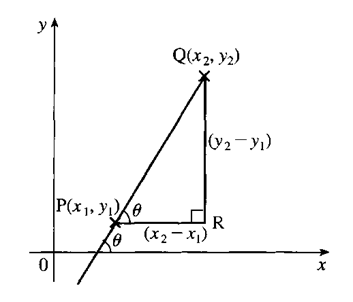Question 2:
Solution:
(a)
(b)
(c)
Substitute (1) into (2),
In the diagram, PRS and QRT are straight lines. Given R is the midpoint of PS and
QR : RT = 1 : 3, Find
QR : RT = 1 : 3, Find
(a) the coordinates of R,
(b) the coordinates of T,
(c) the coordinates of the point of intersection between lines PQ and ST produced.Solution:
(a)
Given R is the midpoint of PS.
(b)
(c)
Substitute (1) into (2),
3x – 7 = –5x + 41
8x = 48
x = 6
From (1),
y = 3(6) – 7 = 11
The coordinates of the point of intersection between lines PQ and ST = (6, 11).





















